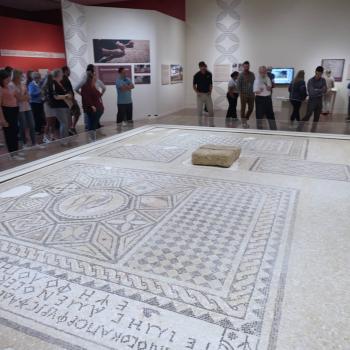Holy Week. Palm Sunday to Easter Sunday. Resurrection Weekend. And now, since the revered and award-winning Mel Gibson movie The Passion of the Christ has consumed today’s vernacular, the idea of what it means has come into question. Some Christian holy days create confusion, but defining and explaining why we believe what we believe is essential.
The extent to which Jesus Christ went to—and through—for the sake of saving humanity and becoming our substituted sacrifice on the Cross is the most drastic and overwhelming act of love in human history.
- He “suffered death, so that by the grace of God he might taste death for everyone” (Hebrews 2:9).
- When Jesus was hanging on that tree, He was “in anguish, he prayed more earnestly, and his sweat was like drops of blood falling to the ground” (Luke 22:44).
- And before he walked the Via Dolorosa to Golgotha, people who watched “were amazed when they saw him. His face was so disfigured he seemed hardly human, and from his appearance, one would scarcely know he was a man” (Isaiah 52:14).
It’s inconceivable to comprehend what Christ experienced during this week. Most importantly, He did it for us—not just those who love Him, but the millions of people who laugh at Christians and mock the work of Christ every day. Jesus died for us all, but why is it called “The Passion of the Christ?”
What’s most important is that there’s nothing “passionate” about what happened, although why it happened has created passion among Christians for millennia. So what’s the difference? Why does it matter what “The Passion of the Christ” means?
Before we delve into those questions and gain an understanding, stay in touch with faith-based issues that hit “close to home.” Subscribe to our free newsletter and never miss what’s being said about the Church and being done in the Church—and what real Christians can say and do in return to defend the love and work of Christ.
The Meaning of “The Passion of the Christ”

Filming this movie almost killed Jim Caviezel, but the stories about what he endured are extraordinary. The Passion of the Christ became an international evangelism tool because of the truth of its message, the anointing on the film, and the authentic brutality conveyed by Jesus’ crucifixion. Many Christians thought Mel Gibson went too far with creative license and caused harm to young believers. Nonetheless, people repeatedly returned to the theaters to watch how Jesus went to the Cross for our eternal place in Heaven.
Following its theatrical run, The Passion of the Christ was the most profitable R-rated movie in history, at $612M. No Palm Sunday or Easter is complete without spending nearly three hours experiencing the grueling acts Jesus endured for us in this triumphant film. Yet, the one thing the film did in awe-striking and inspiring fashion is define what that term meant.
Sure, the calendar is approaching Good Friday, but that’s not why it’s called The Passion.

Of course, “Christ” was not Jesus’ last name. It was a title, and initially, it was a Greek transcription, Χριστός (Christos), which means “anointed one.” Furthermore, that’s the meaning of the Hebrew word מָשִׁיחַ (Messiah). The Lord was “Jesus the Christ,” the Messiah and the Anointed One. Every word in the Bible, specifically the honorifics we give Jesus, originate from different languages.
The same is true for the word “Passion.“ It comes from the Latin word Passio, which means “suffering.” The first time the Latin word passion was used in transcription or ancient writ was found in the 2nd century describing the death of Christ.
Consider that “Passion” was exclusively a Christ-centered term, a theological meaning. It wasn’t until the 13th century that “passion” was used to refer to any other strong emotion outside of deep suffering.
Additionally, think about everything Jesus endured for the three years of His earthly ministry. It should not be surprising that Pati, the root word of Passio, is also the stem of “patience.”

Webster’s dictionary defines passion as “a strong feeling of enthusiasm or excitement for something.” People often describe something passionately, meaning they do it with all their heart and soul. Yet, those same people never stop to think about the pain it can cause if that task is removed from them. That’s how suffering would feel.
It took passion to do what only Jesus could do on the Cross. He had to suffer for our sake. It required deep, emotional commitment to endure the Cross. And it took patience as He awaited his trek to Golgotha, blessing everyone in his path.
Then He said to them, “Thus it is written, and thus it was necessary for the Christ to suffer and to rise from the dead the third day, and that repentance and remission of sins should be preached in His name to all nations, beginning at Jerusalem (Luke 24:46-47 NKJV)
Although it’s labeled as such, “The Suffering of the Christ” is precisely what happened, while “The Passion of the Christ” is exactly why it happened. Remember that this weekend. By His stripes, we were not only healed but also delivered. Hallelujah!

















